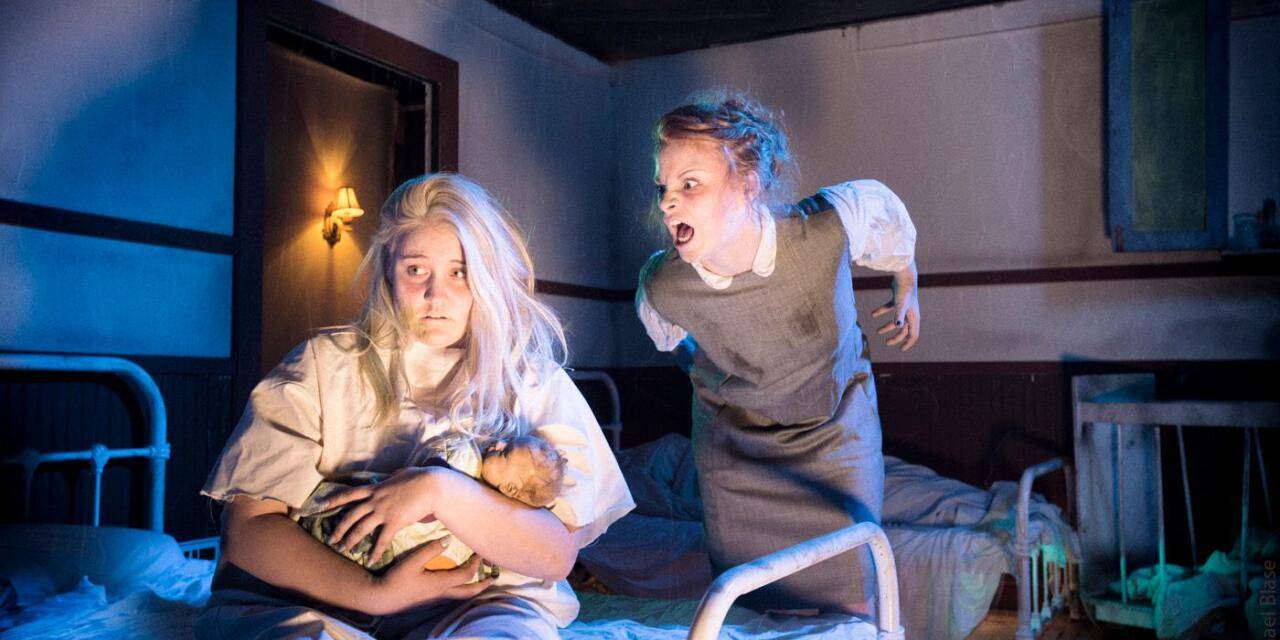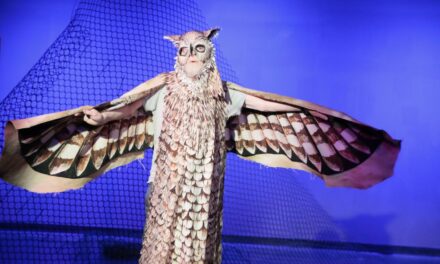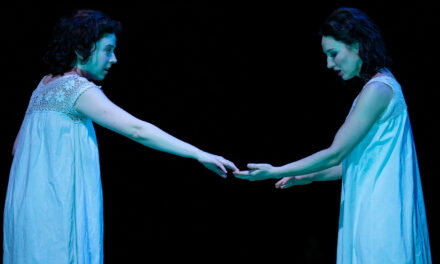If you’re afraid of dolls, I have good news and bad news. The good news is, your fear has a rationale and even a word for it: pediophobia. The bad news is, Nightmare, New York’s long running immersive horror experience, has a new iteration that will exploit that fear. Nightmare Dollhouse has attendees entering a dollhouse in which the dolls have come to life–and want to make you one of them.
Nightmare Dollhouse is the latest production by Psycho Clan, a company that has made immersive horror theater for the last 21 years. They began with Nightmare in 2000 on the Lower East Side of Manhattan. Each year, Nightmare would have a different core idea or concept driving it, such as a vampire museum–one of the more beloved conceits.
Psycho Clan took a reprieve from Nightmare for a few years to focus on more intimate theatrical experiences. Larger experiences, like some traditional haunted houses, often feel pressured to get as many people through the door as possible. “It loses a lot of its artistry,” says Psycho Clan founder Timothy Haskell, in regards to this pressure.
As such, Psycho Clan pivoted to This is Real, a successful immersive show safely simulating a kidnapping for just eight people per performance. Part theater, part game, and part escape room, the eight audience members would have to figure out how to make it out with each given three “lives” in case they messed up while evading their captors. “It was a lot of fun, and it was intended just for Halloween,” Haskell explains, “but ran through February.”
After the success of This is Real, Psycho Clan decided to experiment with sound in I Can’t See. Blindfolded audience members would navigate through a space blindfolded, exploring smells, tastes, and textures. During the pandemic, Psycho Clan made a version that people could experience at home in 2020.
Coming off of the success of these two more intimate and more experimental shows, Psycho Clan decided to return to Nightmare. They imbued the long-running Halloween tradition with some of the experimentation gleaned from the two side projects. Nightmare Gothic, which opened last year in 2022, incorporated interactions through sound design.
The results were sometimes mixed, admits Haskell. “I was trying something very ambitious,” he says, explaining how audience members would drive the plot along through instructions–like handing over a prop or saying a line–relayed to them via headsets. The problem? “A lot of the patrons did not do what they were supposed to do,” Haskell says with a laugh. “When it worked, it was sublime. When it did not, it was very avant garde!”
So this year, with Nightmare Dollhouse, Psycho Clan returns to a more “traditional” immersive horror show. “As ‘traditional’ as I do,” stresses Haskell, who directs theater outside of spooky season in the fall, but sees Nightmare as “still very theatrical” but more like “what people expect and want” from a haunt, with less experimentation.
Still, while Haskell loves a good haunted house, he sees Nightmare as more of an immersive theater experience. “I write an actual play,” he explains. “It’s not Hamlet, but it has… a through line. Everywhere you go in the experience is purposeful to the next thing that you go to, it’s leading you to the climax. And then there’s a denouement.” This is juxtaposed to more traditional haunted houses that have a theme, and oftentimes someone, or multiple someones, chasing you or popping out to scare you and keep you moving. Nightmare doesn’t rely on jump scares, but seeks to scare people through investment in the storyline. “Startles are ephemeral,” Haskell clarifies. “I want to leave you truly haunted.”
For Nightmare Dollhouse, the story revolves around a doll museum in which the dolls come to life and kill the staff, replacing them. How does the narrative aim to scare people, if that short tagline doesn’t already? It starts off not-scary (“I mean, it’s creepy,” adds Haskell) in regards to the doll museum that audiences enter. However, the experience quickly takes a turn that communicates the twist of what has happened to this place.
The show isn’t long, just 30 minutes, but thanks to both the environmental design and the performances from the actors, Nightmare Dollhouse seeks to relay as much plot as efficiently as possible. And while this iteration won’t be as experimental as last year’s, it still has experimentation through leaning into audience interaction more heavily than previous productions. Audience members can expect a tea party with a doll, akin to a warped Alice in Wonderland, whereupon the doll will ask questions. And you will answer.
And if audience participation doesn’t scare you, it’s more likely that the dolls themselves will. Let’s go back to pediophobia. Not to be confused with pedophobia (fear of children), pediophobia plays into the fear of dolls, or any lifelike representation of a human that isn’t one, like a mannequin or audio-animatronic. If this is your fear, you’re far from alone.
“A number of years ago, I did a haunt called Face Your Fear,” explains Haskell. “We did a haunt in every borough. We polled the people in every borough about what their top thirteen fears were.” And sure enough, what came up a lot? Dolls. “Things that look human, but are not human, are really unsettling to the mind. The mind has trouble decoding it.” Haskell adds that this also explains why so many people are afraid of clowns.
Thankfully, clowns are for another year. For this year, Nightmare Dollhouse is all about dolls. Ancient dolls, 20th century dolls, dolls from entertainment, you name it. Haskell researched various dolls and created a backstory for each one in the production. To learn these backstories, you’ll have to see the show. But Haskell admits they have one thing in common: “All my backstories are that they’re essentially evil.”
Presented by Psycho Clan and ETR Ventures, Nightmare Dollhouse runs from October 13th to October 31st at Theatro SEA at The Clemente. Audience members can get tickets here, but be warned, they can’t go through in groups greater than six. This isn’t a regular haunted house, after all.
This post was written by the author in their personal capacity.The opinions expressed in this article are the author’s own and do not reflect the view of The Theatre Times, their staff or collaborators.
This post was written by Andrew Agress.
The views expressed here belong to the author and do not necessarily reflect our views and opinions.


















